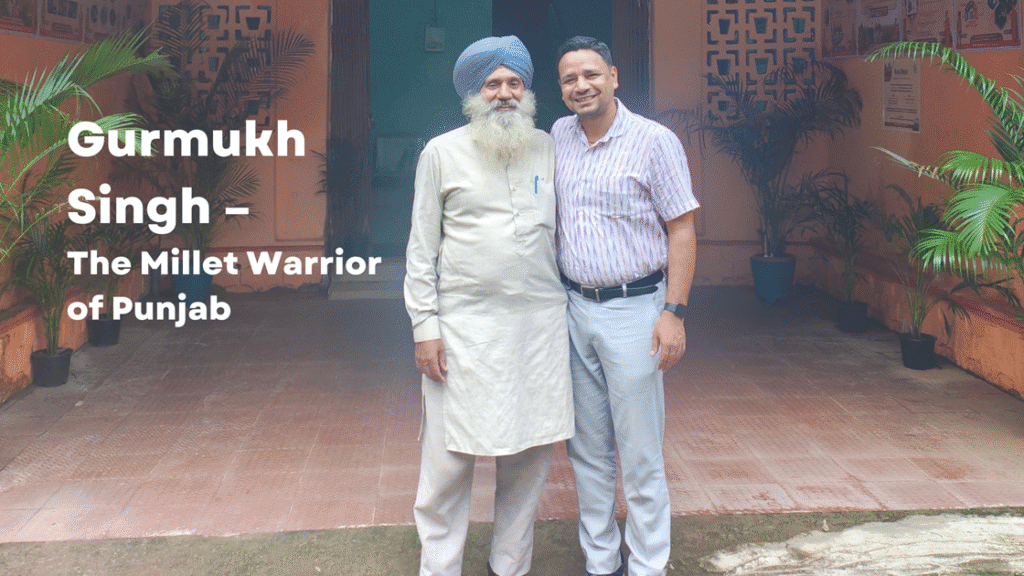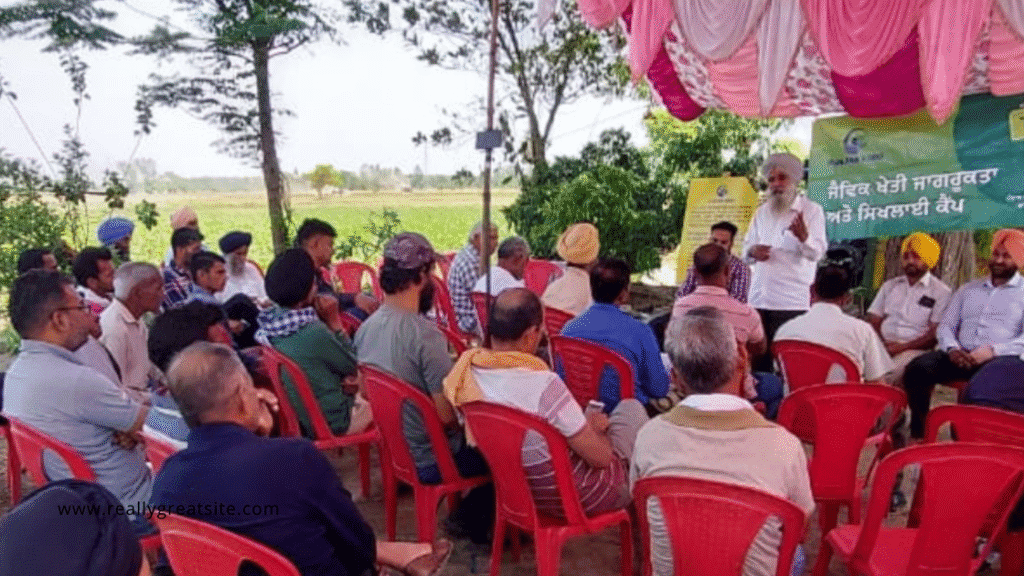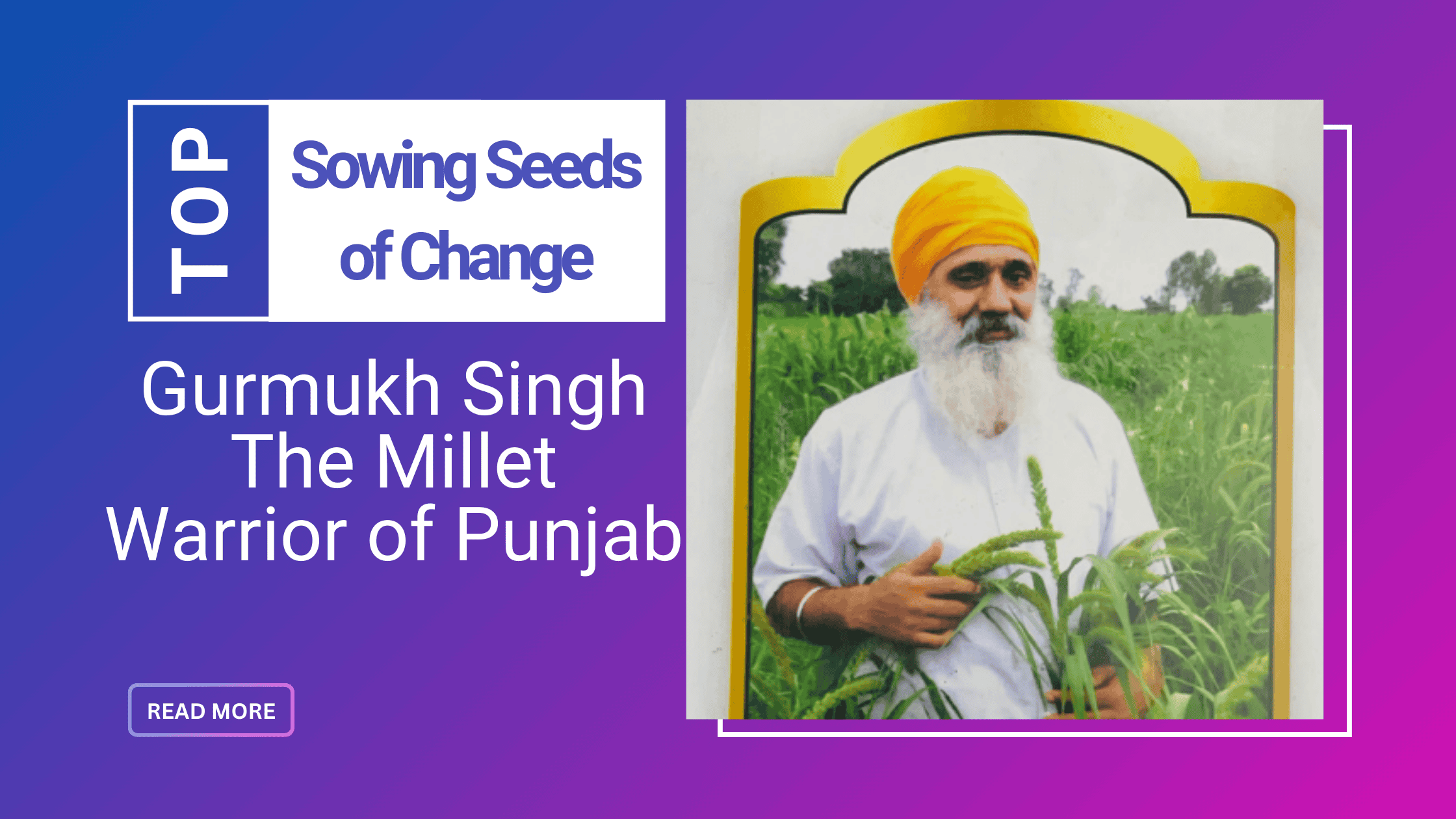Table of Contents
In the lush green belt of Punjab, where the golden fields of wheat and rice have long dominated the agricultural landscape, a quiet but powerful revolution is taking place. Leading this change is Gurmukh Singh, a progressive farmer, agripreneur, and certified organic farming trainer, who is on a mission to diversify Punjab’s cropping pattern by bringing back forgotten grains — millets.

I had the privilege of meeting Gurmukh Singh today in the tribal district of Koraput, Odisha, a region that has emerged as a millet hub through the successful implementation of the Odisha Millets Mission, now known as Shree Anna Abhiyan. Our conversation revolved around the incredible potential of millets, especially Ragi (Finger Millet), and the challenges and opportunities in promoting its cultivation across India, especially in states like Punjab.
A Farmer Ahead of His Time:
Gurmukh Singh is not your conventional farmer. He is an organic farming practitioner and a certified trainer under the Pandit Deen Dayal Upadhyaya Krishi Shiksha Yojana of the Indian Council of Agricultural Research (ICAR). He is also a proud member of the Organic Association of India. But what truly sets him apart is his deep commitment to sustainable agriculture and his passion for millet cultivation — a rare trait in a region that remains heavily reliant on water-intensive wheat and rice farming.
Recognizing the ecological strain and economic vulnerabilities associated with mono-cropping, Gurmukh adopted crop rotation and crop diversification years ago. Today, his farm is a vibrant example of sustainable farming, where a variety of crops grow in harmony with nature. Among them, Kodo millet stands out as a symbol of revival and resilience.
Reintroducing Millets to North India:
In fact, Gurmukh Singh holds the distinction of being the first farmer in North India to reintroduce the cultivation of Kodo millet. This bold step not only challenged the status quo but also inspired many fellow farmers in Punjab to rethink their cropping patterns.
In a region where the cultivation of wheat and rice is deeply entrenched — both culturally and economically — such a transition requires both courage and conviction. But Gurmukh believes that millets are the future.
“They require less water, are resilient to climate stress, and are nutritionally superior. What more do we need?” he says with a quiet determination.
High Yields, High Hopes:
On his farm, Gurmukh has successfully harvested Kodo millet yields of up to 18 quintals per acre, a promising figure that has caught the attention of many. Not just a grower, he is also actively involved in seed production, ensuring that quality millet seeds reach other farmers. By distributing seeds and offering hands-on training in millet cultivation, he is building a community of like-minded farmers who believe in sustainable agriculture.
He practices the System of Millet Intensification (SMI), a technique that optimizes the use of seeds, water, and spacing to achieve higher yields. His dream is to introduce high-yielding Ragi varieties in Punjab — a millet that is easy to grow and, importantly, easy to process and consume.
“Ragi doesn’t require dehusking like some other millets. If we can promote it well, it could become the staple millet in Punjab,” he explained during our conversation.
Inspired by Odisha’s Millet Revolution:
Gurmukh was visibly impressed by the work being done under the Shree Anna Abhiyan (formerly Odisha Millets Mission). He admired how Odisha is focusing on reviving traditional grains, providing better incentives to millet farmers, and ensuring an assured market through Minimum Support Price (MSP) mechanisms.
This support system, he believes, is critical to motivating farmers to transition from traditional crops to millets. He hopes Punjab can draw inspiration from Odisha’s model to build a millet ecosystem in the state — complete with value chains, market linkages, and government incentives.
Advocacy Beyond Punjab:
What is most remarkable about Gurmukh Singh is that his efforts are not confined to Punjab. He is actively promoting millets across different parts of India — conducting workshops, training sessions, and awareness campaigns. His reach extends beyond his farm; he is a changemaker and an advocate for millet-based agriculture in India.

He sees millets not just as a crop, but as a solution — to water scarcity, climate change, nutritional insecurity, and the economic distress faced by smallholder farmers.
A Man with a Mission:
In many ways, Gurmukh Singh represents a new era of Indian farmers — one that combines traditional wisdom with modern scientific approaches, one that values sustainability over short-term gains, and one that is deeply committed to the wellbeing of both people and the planet.
He is not only preserving the rich agricultural heritage of millets but also reinventing it to suit the demands of a changing world. His work aligns with global calls to adopt climate-smart agriculture and promote biodiversity in food systems.
A Call for More Champions:
Punjab, a state once heralded as the food bowl of India, now faces ecological and agronomic challenges due to over-reliance on water-intensive crops. The way forward lies in embracing agroecological practices, diversifying crop choices, and reviving climate-resilient grains like millets.
Gurmukh Singh is showing us that this is not just possible, but practical. With the right support, incentives, and awareness, more farmers can follow his path.
His story is a reminder that the future of farming lies not in what we have always done, but in what we must do to ensure resilience, sustainability, and food security.
A Family-Led Millet Enterprise:
Today, Gurmukh runs a processing plant on his own farm and sells millets in the form of grains, flours, and flakes under the Virasat Natural Farms brand. His enterprise also produces and sells mustard oil, jaggery, pulses, and other organic products.
What makes his journey even more inspiring is that it’s a family affair. His daughter and wife actively help in packaging and managing the operations. “This is a family enterprise,” he says proudly, adding a personal touch to an otherwise industrialized agricultural system.
Connect With Gurmukh Singh:
If you’re a farmer, student, policymaker, or simply a millet enthusiast, Gurmukh Singh is more than happy to help. He frequently delivers lectures, workshops, and farm visits, and believes that knowledge shared is knowledge multiplied.
Contact: 98765-24292
Email: virasat65@gmail.com
Farm: Virasat Natural Farms, Village Rangeelpur, Batala, Gurdaspur, Punjab
Whether you’re looking to start millet farming, learn organic techniques, or collaborate on sustainable agri-projects, he welcomes all with open arms.
Conclusion:
As India steps into a millet-forward future, we need more leaders like Gurmukh Singh — individuals who are not afraid to challenge the norm, who believe in community-driven change, and who lead by doing.
Punjab doesn’t just need more millets. It needs more millet warriors like Gurmukh Singh — resilient, resourceful, and rooted in the soil.
Author: Tapas Chandra Roy, A Certified Farm Advisor on Millets, ‘Promoting Millets from Farm to Plate’, and an Author of the book -” Millet Business Ideas-Empowering Millet Startups”. In a mission to take the forgotten grains- Millets to Millions. To remain updated on my blogs on Millets, please subscribe to my newsletter, and for any queries, please feel free to write to tapas@milletadvisor.com

